- Home
- Mary Higgins Clark
I'll Walk Alone
I'll Walk Alone Read online
BY MARY HIGGINS CLARK
The Shadow of Your Smile
Just Take My Heart
Where Are You Now?
Ghost Ship (Illustrated by Wendell Minor)
I Heard That Song Before
Two Little Girls in Blue
No Place Like Home
Nighttime Is My Time
The Second Time Around
Kitchen Privileges
Mount Vernon Love Story
Silent Night / All Through the Night
Daddy’s Little Girl
On the Street Where You Live
Before I Say Good-bye
We’ll Meet Again
All Through the Night
You Belong to Me
Pretend You Don’t See Her
My Gal Sunday
Moonlight Becomes You
Silent Night
Let Me Call You Sweetheart
The Lottery Winner
Remember Me
I’ll Be Seeing You
All Around the Town
Loves Music, Loves to Dance
The Anastasia Syndrome and Other Stories
While My Pretty One Sleeps
Weep No More, My Lady
Stillwatch
A Cry in the Night
The Cradle Will Fall
A Stranger Is Watching
Where Are the Children?
BY MARY HIGGINS CLARK AND CAROL HIGGINS CLARK
Dashing Through the Snow
Santa Cruise
The Christmas Thief
He Sees You When You’re Sleeping
Deck the Halls
Simon & Schuster
1230 Avenue of the Americas
New York, NY 10020
www.SimonandSchuster.com
This book is a work of fiction. Names, characters, places, and incidents either are products of the author’s imagination or are used fictitiously. Any resemblance to actual events or locales or persons, living or dead, is entirely coincidental.
Copyright © 2011 by Mary Higgins Clark
All rights reserved, including the right to reproduce this book or portions thereof in any form whatsoever. For information address Simon & Schuster Subsidiary Rights Department, 1230 Avenue of the Americas, New York, NY 10020.
First Simon & Schuster hardcover edition April 2011
SIMON & SCHUSTER and colophon are registered trademarks of Simon & Schuster, Inc.
The Simon & Schuster Speakers Bureau can bring authors to your live event. For more information or to book an event, contact the Simon & Schuster Speakers Bureau at 1-866-248-3049 or visit our website at www.simonspeakers.com.
Designed by Jill Putorti
Manufactured in the United States of America
10 9 8 7 6 5 4 3 2 1
Library of Congress Cataloging-in-Publication Data
Clark, Mary Higgins.
I’ll walk alone / Mary Higgins Clark. —1st simon & schuster hardcover ed.
p. cm.
1. Identity theft—Fiction. 2. Women architects—Fiction. 3. Manhattan (New York, N.Y.)—Fiction. i. Title.
Ps3553.l287i5 2011
813’.54—dc22
2011003855
ISBN 978-1-4391-8096-9
ISBN 978-1-4391-8679-4 (ebook)
In memory of Reverend Joseph A. Kelly, S.J.
1931-2008
Always a twinkle in this Jesuit’s eye
Always a smile on his handsome face
Always faith and compassion overflowing his soul
He was the stuff of which saints are made
When all heaven protested his absence
His Creator called him home
Acknowledgments
I have often said, seemingly in jest, that my favorite two words are “THE END.”
They are my favorite two words. They mean that the tale has been told, the journey completed. They mean that the people who at this time last year were not even figments of my imagination have lived the life I chose for them, or to put it better, they chose for themselves.
My editor, Michael Korda, and I have made this same journey for thirty-six years, since that first day in March 1974 when I received the unbelievable call that Simon and Schuster had bought my first book, Where Are the Children?, for three thousand dollars. All this time, Michael has been the Captain of my literary ship, and I cannot be more joyful and honored than to have shared our collaboration. Last year at this time he suggested, “I think a book about identity theft would make a good subject for you.” Here it is.
Senior Editor Kathy Sagan has been my friend for many years. A decade ago, she was the editor of The Mary Higgins Clark Mystery Magazine, and for the first time has worked with me, in conjunction with Michael, on a suspense novel. Love you, Kathy, and thank you.
Thanks always to Associate Director of Copyediting Gypsy da Silva and my readers-in-progress Irene Clark, Agnes Newton, and Nadine Petry and to my retired publicist, Lisl Cade.
Once again Sgt. Steven Marron and Detective Richard Murphy, Ret., of the New York District Attorney’s office have been my guides in presenting accurately the step-by-step law enforcement that occurs when a major crime is committed.
Of course, and always, love beyond measure to my spouse extraordinaire, John Conheeney and our combined family of nine children and seventeen grandchildren.
Finally, to you, my readers, thank you for all the years we’ve shared together. “May the road rise to meet you . . .”
Contents
Chapter 1
Chapter 2
Chapter 3
Chapter 4
Chapter 5
Chapter 6
Chapter 7
Chapter 8
Chapter 9
Chapter 10
Chapter 11
Chapter 12
Chapter 13
Chapter 14
Chapter 15
Chapter 16
Chapter 17
Chapter 18
Chapter 19
Chapter 20
Chapter 21
Chapter 22
Chapter 23
Chapter 24
Chapter 25
Chapter 26
Chapter 27
Chapter 28
Chapter 29
Chapter 30
Chapter 31
Chapter 32
Chapter 33
Chapter 34
Chapter 35
Chapter 36
Chapter 37
Chapter 38
Chapter 39
Chapter 40
Chapter 41
Chapter 42
Chapter 43
Chapter 44
Chapter 45
Chapter 46
Chapter 47
Chapter 48
Chapter 49
Chapter 50
Chapter 51
Chapter 52
Chapter 53
Chapter 54
Chapter 55
Chapter 56
Chapter 57
Chapter 58
Chapter 59
Chapter 60
Chapter 61
Chapter 62
Chapter 63
Chapter 64
Chapter 65
Chapter 66
Chapter 67
Chapter 68
Chapter 69
Chapter 70
Chapter 71
Chapter 72
Chapter 73
Chapter 74
Chapter 75
Chapter 76
Chapter 77
Chapter 78
Chapter 79
Chapter 80
Chapter 81
Chapter 82
Chapter 83
Chapter 84
Chapter 85
Ch
apter 86
Chapter 87
Chapter 88
Chapter 89
Chapter 90
Epilogue
1
Father Aiden O’Brien was hearing confessions in the lower church of St. Francis of Assisi on West Thirty-first Street in Manhattan. The seventy-eight-year-old Franciscan friar approved of the alternate way of administering the sacrament, that of having the penitent sit in the Reconciliation Room with him, rather than kneeling on the hard wood of the confessional with a screen hiding his or her identity.
The one time he felt the new way did not work was when, sitting face-to-face, he sensed that the penitents might not be able to allow themselves to say what might have been confided in darkness.
This was happening now on this chilly, windswept afternoon in March.
In the first hour he had sat in the room, only two women had shown up, regular parishioners, both in their mideighties, whose sins, if any had ever existed, were long behind them. Today one of them had confessed that when she was eight years old she remembered telling a lie to her mother. She had eaten two cupcakes and blamed her brother for the missing one.
As Fr. Aiden was praying his rosary until he was scheduled to leave the room, the door opened and a slender woman who looked to be in her early thirties came in. Her expression tentative, she moved slowly toward the chair facing him and hesitantly sat down on it. Her auburn hair was loose on her shoulders. Her fur-collared suit was clearly expensive, as were her high-heeled leather boots. Her only jewelry was silver earrings.
His expression serene, Fr. Aiden waited. Then when the young woman did not speak, he asked encouragingly, “How can I help you?”
“I don’t know how to begin.” The woman’s voice was low and pleasant, with no hint of a geographical accent.
“There’s nothing you can tell me that I haven’t already heard,” Fr. Aiden said mildly.
“I …” The woman paused, then the words came rushing out. “I know about a murder that someone is planning to commit and I can’t stop it.”
Her expression horrified, she clasped her hand over her mouth and abruptly stood up. “I should never have come here,” she whispered. Then, her voice trembling with emotion, she said, “Bless me, Father, for I have sinned. I confess that I am an accessory to a crime that is ongoing and to a murder that is going to happen very soon. You’ll probably read about it in the headlines. I don’t want to be part of it, but it’s too late to stop.”
She turned and in five steps had her hand on the door.
“Wait,” Fr. Aiden called, trying to struggle to his feet. “Talk to me. I can help you.”
But she was gone.
Was the woman psychotic? Fr. Aiden wondered. Could she possibly have meant what she said? And if so, what could he do about it?
If she was telling the truth, I can do nothing about it, he thought, as he sank back into the chair. I don’t know who she is or where she lives. I can only pray that she is irrational and that this scenario is some kind of fantasy. But if she is not irrational, she is shrewd enough to know that I am bound by the seal of the confessional. At some point she may have been a practicing Catholic. The words she used, “Bless me, Father, for I have sinned,” was the way a penitent used to begin to confess.
For long minutes he sat alone. When the woman exited, the green light over the Reconciliation Room door had automatically gone on, which meant that anyone waiting outside would have been free to enter. He found himself praying fervently that the young woman might return, but she did not.
He was supposed to leave the room at six o’clock. But it was twenty minutes after six when he gave up hope that she might come back. Finally, aware of the weight of his years and the spiritual burden of his role as confessor, Fr. Aiden placed both hands on the arms of his chair and got up slowly, wincing at the sharp thrust of pain in his arthritic knees. Shaking his head, he began to walk to the door but stopped for a moment in front of the chair where the young woman had been sitting.
She wasn’t crazy, he thought sadly. I can only pray that if she really has knowledge that the crime of a murder is about to be committed, she does what her conscience is telling her to do. She must prevent it.
He opened the door and saw two people lighting candles in front of the statue of St. Jude in the atrium of the church. A man was kneeling on the prie-dieu in front of the Shrine of St. Anthony, his face buried in his hands. Fr. Aiden hesitated, wondering if he should ask the visitor if he wanted to go to confession. Then he reflected that the posted hours for hearing confessions had been over for nearly half an hour. Maybe this visitor was begging for a favor or giving thanks for receiving one. The Shrine of St. Anthony was a favorite stop for many of their visitors.
Fr. Aiden walked across the atrium to the door that led to the passage to the Friary. He did not feel the intense gaze of the man who was no longer deep in prayer but had turned, pushed up his dark glasses, and was studying him intently, taking note of his rim of white hair and slow gait.
She was only in there less than a minute, the observer thought. How much did she tell that old priest? he wondered. Can I afford to take the chance that she didn’t spill her guts to him? The man could hear the outer doors of the church being opened and the sound of approaching steps. Quickly he replaced his sunglasses and pulled up the collar of his trench coat. He had already copied Fr. Aiden’s name from the door.
“What do I do about you, Fr. O’Brien?” he asked himself angrily, as he brushed past the dozen or so visitors entering the church.
For the moment he had no answer.
What he did not realize was that he, the observer, was being observed. Sixty-six-year-old Alvirah Meehan, the cleaning woman turned columnist and celebrity author who had won forty million dollars in the New York Lottery, was also there. She had been shopping in Herald Square and then, before going home to Central Park South, had walked down the few blocks to the church to light a candle in front of St. Anthony’s Shrine and drop off an extra donation for the breadline because she had just received an unexpected royalty check for her memoir From Pots to Plots.
When she saw the man seemingly deep in prayer in front of the shrine, she had paid a visit to the grotto of Our Lady of Lourdes. A few minutes later, when she saw Fr. Aiden, her old friend, leave the Reconciliation Room, she had been about to run up and say a quick hello to him. Then to her astonishment, the man who had seemed so engrossed in prayer suddenly jumped up, his dark glasses raised. No mistake about it, he was watching Fr. Aiden make his way to the door of the Friary.
Alvirah dismissed any passing thought that that guy might have wanted to ask Fr. Aiden to hear his confession. He wanted to get a good look at Father, she thought, as she watched the man pull his glasses back over his eyes and turn up the collar of his coat. She had taken off her glasses so he was too far away for her to see him clearly, but from the distance she judged him to be about six feet tall. His face was in the shadows but she could see he was on the thin side. Her impression, when she had passed him at the statue, was that he had no gray in his full head of black hair. He had been covering his face with his hands.
Who knows what makes people tick, Alvirah asked herself as she watched the stranger, now moving quickly, exit by the door nearest him. But I’ll tell you this much, she thought. As soon as Fr. Aiden left the Reconciliation Room, whatever that guy had to say to St. Anthony, he wound it up fast.
2
It is March 22. If he is still alive, my Matthew is five years old today, Zan Moreland thought as she opened her eyes and lay still for long minutes, brushing back the tears that often dampened her face and pillow during the night. She glanced at the clock on the dresser. It was 7:15 A.M. She had slept almost eight hours. The reason, of course, was that when she went to bed, she had taken a sleeping pill, a luxury she almost never permitted herself. But the awareness of his birthday had left her almost sleepless for the last week.
Fragments of her recurring dream of searching for Matthew came back
to her. This time she had been in Central Park again, searching and searching for him, calling his name, begging him to answer. His favorite game had been hide-and-seek. In the dream she was telling herself that he wasn’t really missing. He was just hiding.
But he was missing.
If only I had canceled my appointment that day, Zan thought for the millionth time. Tiffany Shields, the babysitter, had admitted that while Matthew was sleeping she had positioned his stroller so that the sun would not be in his face and had spread a blanket on the grass and fallen asleep herself. She had not realized he wasn’t in the stroller until she woke up.
An elderly witness had phoned the police after she read the headlines about the missing toddler. She reported that she and her hus band had been walking their dog in the park and noticed the stroller was empty nearly half an hour before the babysitter had told the police she had looked into it. “I didn’t think anything of it at the time,” the witness said, sounding upset and angry. “I just thought that someone, the mother maybe, had taken the child over to the playground. It never occurred to me that young woman could possibly be watching anyone. She was out like a light.”
Tiffany had also finally admitted that because Matthew was asleep when they left the apartment, she did not bother to strap him in.
Did he climb out by himself and then someone noticed he was alone and took his hand? Zan asked herself, the question dull with repetition. There are predators who hang around. Please, God, don’t let it be that.
Matthew’s picture had been in newspapers all over the country and on the Internet. I prayed that some lonely person might have taken him and then was afraid to admit it, but finally would come forward or leave him in a safe place where he’d be found, Zan thought. But after almost two years, there was not a single hint of where he might be. By now he’s probably forgotten me.
She sat up slowly and twisted her long auburn hair back on her shoulders. Even though she exercised regularly, her slender body felt stiff and achy. Tension, the doctor had told her. You’re living with it, 24/7. She slid her feet to the floor, stretched, and stood up, then walked over to the window and began to close it as she absorbed the early-morning view of the Statue of Liberty and New York Harbor.

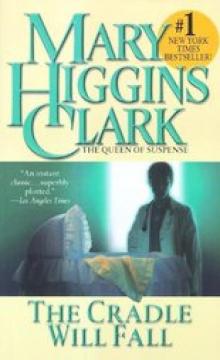 Clark, Mary Higgins 03 - The Cradle Will Fall
Clark, Mary Higgins 03 - The Cradle Will Fall Moonlight Becomes You
Moonlight Becomes You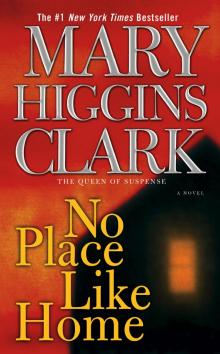 No Place Like Home
No Place Like Home I've Got My Eyes on You
I've Got My Eyes on You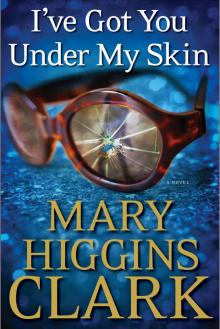 I've Got You Under My Skin
I've Got You Under My Skin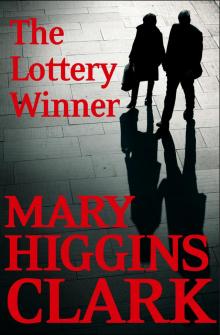 The Lottery Winner
The Lottery Winner As Time Goes By
As Time Goes By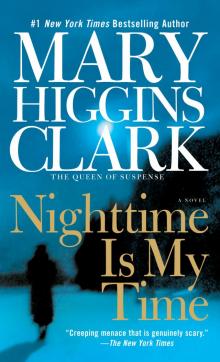 Nighttime Is My Time
Nighttime Is My Time Where Are the Children?
Where Are the Children? The Lost Years
The Lost Years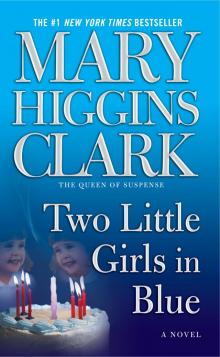 Two Little Girls in Blue
Two Little Girls in Blue Mount Vernon Love Story: A Novel of George and Martha Washington
Mount Vernon Love Story: A Novel of George and Martha Washington All by Myself, Alone
All by Myself, Alone The Melody Lingers On
The Melody Lingers On Just Take My Heart
Just Take My Heart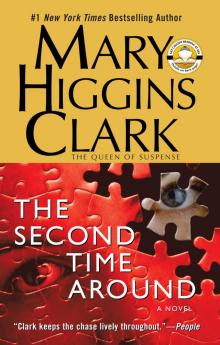 The Second Time Around
The Second Time Around A Cry in the Night
A Cry in the Night Deck the Halls
Deck the Halls We'll Meet Again
We'll Meet Again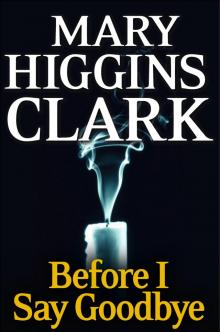 Before I Say Goodbye
Before I Say Goodbye Piece of My Heart
Piece of My Heart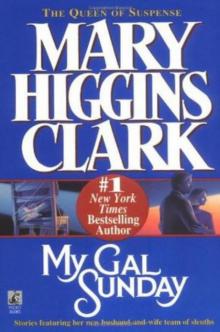 My Gal Sunday
My Gal Sunday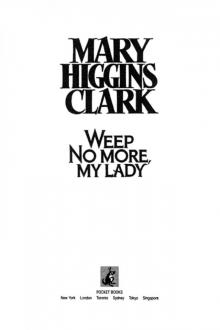 Weep No More, My Lady
Weep No More, My Lady Daddy's Little Girl
Daddy's Little Girl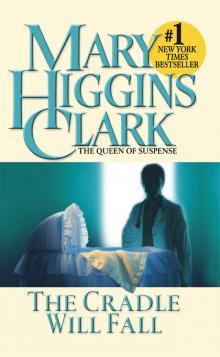 The Cradle Will Fall
The Cradle Will Fall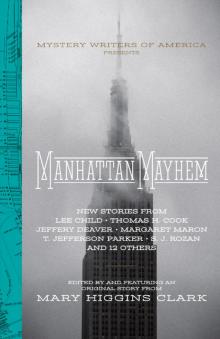 Manhattan Mayhem: New Crime Stories From Mystery Writers of America
Manhattan Mayhem: New Crime Stories From Mystery Writers of America Where Are You Now?
Where Are You Now?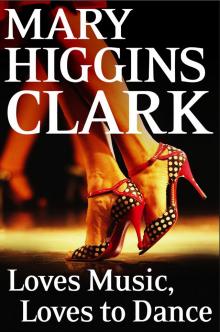 Loves Music, Loves to Dance
Loves Music, Loves to Dance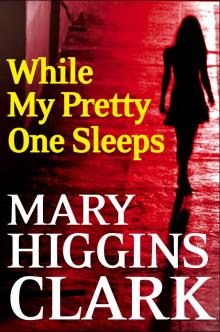 While My Pretty One Sleeps
While My Pretty One Sleeps Pretend You Don't See Her
Pretend You Don't See Her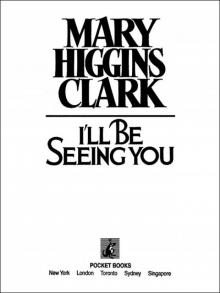 I'll Be Seeing You
I'll Be Seeing You Let Me Call You Sweetheart
Let Me Call You Sweetheart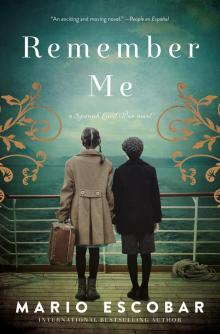 Remember Me
Remember Me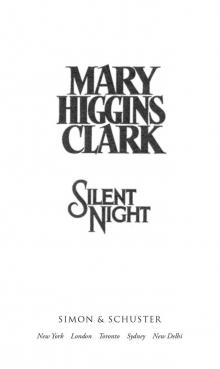 Silent Night
Silent Night Kitchen Privileges
Kitchen Privileges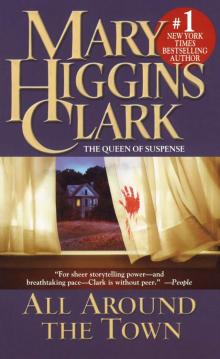 All Around the Town
All Around the Town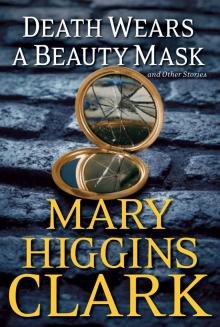 Death Wears a Beauty Mask and Other Stories
Death Wears a Beauty Mask and Other Stories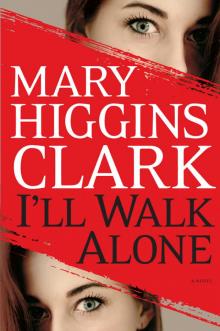 I'll Walk Alone
I'll Walk Alone The Shadow of Your Smile
The Shadow of Your Smile Kiss the Girls and Make Them Cry
Kiss the Girls and Make Them Cry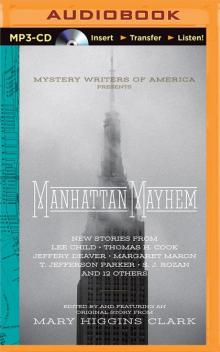 Manhattan Mayhem
Manhattan Mayhem Deck the Halls (Holiday Classics)
Deck the Halls (Holiday Classics)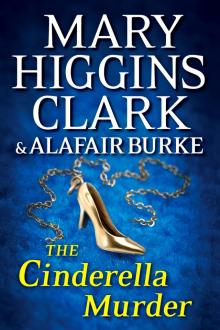 The Cinderella Murder
The Cinderella Murder All Dressed in White
All Dressed in White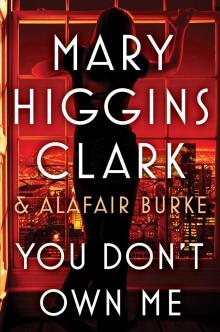 You Don't Own Me
You Don't Own Me The Christmas Thief
The Christmas Thief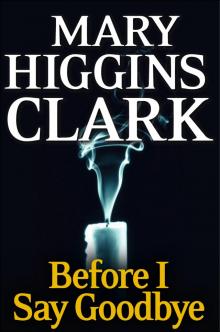 Before I Say Good-Bye
Before I Say Good-Bye Dashing Through the Snow
Dashing Through the Snow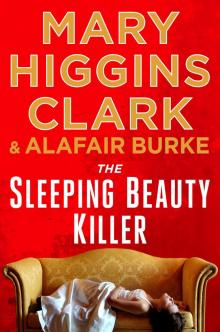 The Sleeping Beauty Killer
The Sleeping Beauty Killer Mount Vernon Love Story
Mount Vernon Love Story Santa Cruise
Santa Cruise I 've Heard That Song Before
I 've Heard That Song Before